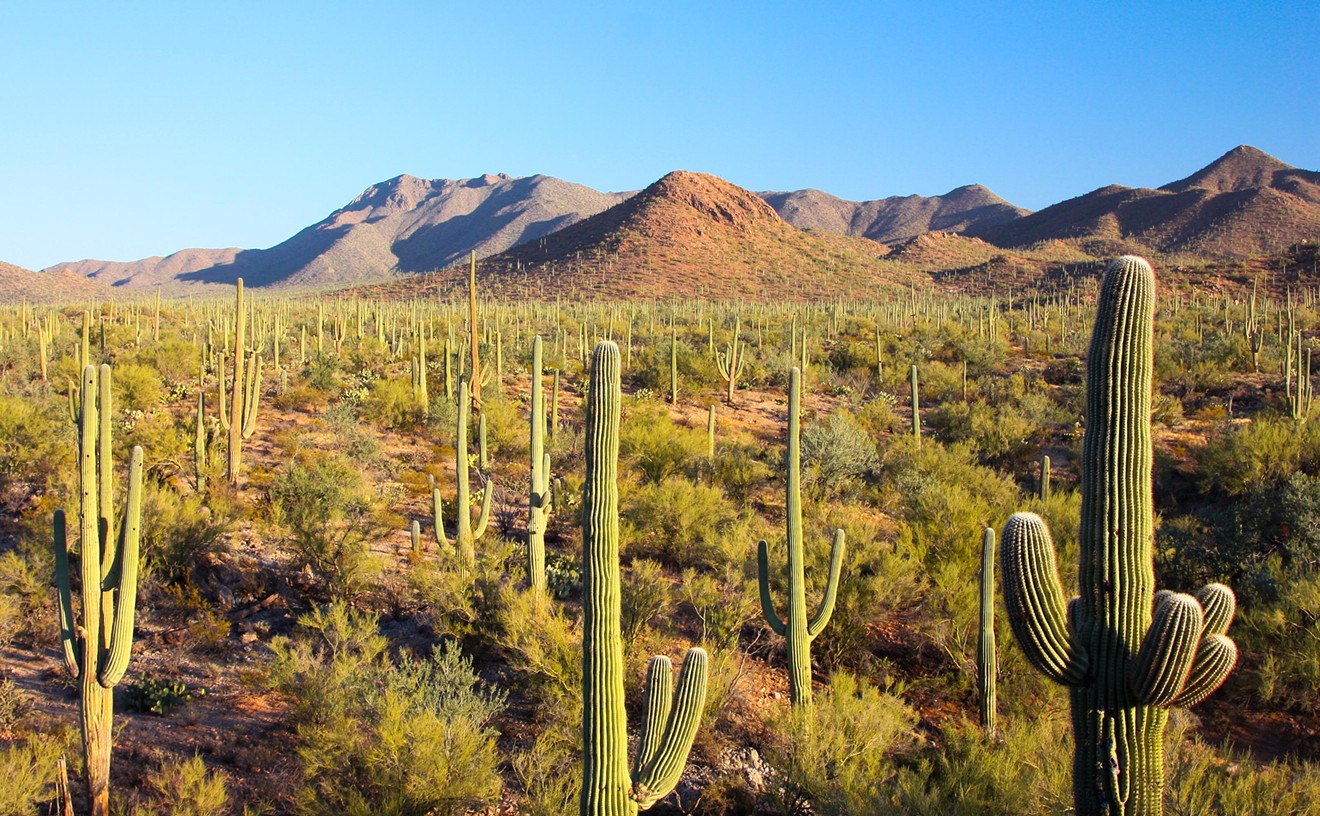The current landscape of mural art in metro Phoenix is a patchwork of pieces by local artists, artists with Arizona roots such as Luster Kaboom and El Mac, and artists who periodically roll into metro Phoenix from other parts -- sometimes during such organized events as Paint PHX.
But it's looking like some new players may be entering the fray -- as part of a larger initiative conceived by Steven J. Tepper, Dean for ASU's Herberger Institute for Design and the Arts. When Tepper talked with Jackalope Ranch earlier this year about the state of the arts in Arizona, he spoke of engaging students and community partners in creative projects throughout metro Phoenix. He filled out some of the details when we spoke again last week, noting that public murals are one of many options.
See also: State of the Arts: Phoenix's Arts Community Is at a Make-or-Break Moment. It's Time to Grow Up
Tepper, who started at ASU in July of 2014, recalls coming to ASU "on the heels of Grant Street Studios' success and a real sense of creative energy percolating downtown." The studios, which are working spaces for graduate students pursuing MFA degrees at ASU, are located in a repurposed warehouse just up the street from Bentley Gallery.
They've helped to fuel Tepper's thinking about other ways students might contribute to the city's development of a vibrant arts core. Lately he's been considering all sorts of options: Can we create a live/work space downtown? Can we create a creative city center and incubating space where student project teams can be based?
Demonstrating an infectious idealism, Tepper talks of incubating something he's dubbed WPA 2.0 or Works Progress Arizona. The name references President Franklin D. Roosevelt's ambitious Works Progress Administration, established during the Great Depression to employ citizens in diverse projects benefiting the public sector. At the time, artists were engaged in creating murals on public buildings, writing new theater works and such.
WPA projects completed in Arizona include a 1938 mural by Jay Datus for the 1938 addition to the Arizona State Capitol. Titled The Pageant of Arizona Progress, the mural has a rising Phoenix at its center, and two green trees that flank assorted people including farmers, laborers, a cowboy, and a tourist. ASU students and their community partners might have something a little different in mind this time around, whether a greater diversity of faces, the inclusion of native plants and animals, or a technology twist.
Murals are but one of many projects Herberger Institute students may undertake as part of the initiative. The institute comprises five different schools, including not only Art, Design, and Music -- but also Arts, Media + Engineering and well as Film, Dance and Theatre. Tepper expects students will be engaged in projects involving not only visual art, but also design, performance art, and more. He's yet to announce a formal timeline for implementation, which depends in part on when they're able to line up participating community partners, or note whether any of these activities will generate revenue for ASU.
Tepper says Phoenix is a great place to roll out this type of initiative, which could ultimately be replicated on different scales in other regions. "It can happen in a place like Phoenix where there's openness to new ways of doing things," he says. Tepper envisions having more Herberger Institute students living downtown, noting that his "ultimate goal" is 1,000. "Having 300 or 400 within five years would be great," he says.
"One part of what we're seeing downtown is an investment in public life," he says. Tepper sites specific examples from vacant lots being developed to restaurants moving downtown -- and talks about resources including Roosevelt Row, Arizona School for the Arts, and Phoenix Art Museum. "All these things are gelling," says Tepper.
He's eager to see more ASU students "helping to activate public spaces" by getting more art into schools, working with cultural nonprofits, and getting involved with other community mainstays such as hospitals. "There's no question that Phoenix has passed the threshold of cultural development and is now on an accelerated path." Making more students part of that trajectory benefits not only the community but also the students who gain valuable connections and real-world experience. He's hoping it leads as well more students staying in metro Phoenix after they graduate.
Despite his lofty ambitions, it's not all pie in the sky with Tepper, although that particular visual might make for a pretty cool mural. He's working now on specifics, addressing practical questions with Herberger Institute department heads and faculty members who'll continue to be key players as the initiative moves forward. Many are artists already quite active in the metro Phoenix arts scene.
They're working on identifying potential partners, and details that impact students such as what counts as participation in the program and how students will get academic credit. They're also planning to involve other ASU entities, such as the College of Public Service & Community Solutions.
While specific projects haven't been set up yet, Tepper says the initial 18-month pilot program will likely include about 10 of them. "Many will be driven by existing relationships and faculty interests." Eventually, Herberger would hire a director for the initiative, which he envisions engaging 1,000 students with 100 community partners.
"People who have ideas should begin to write to me," says Tepper, whose e-mail address is [email protected]. "This will be an incremental roll-out, so we want to have a master list of great ideas in the queue."
Knowing his penchant for bow ties, we're thinking a giant mural with a vast array of neckwear needs to make that list.
See also: Steven J. Tepper, New ASU Herberger Institute Dean, Talks Arts, Policy, and Community











